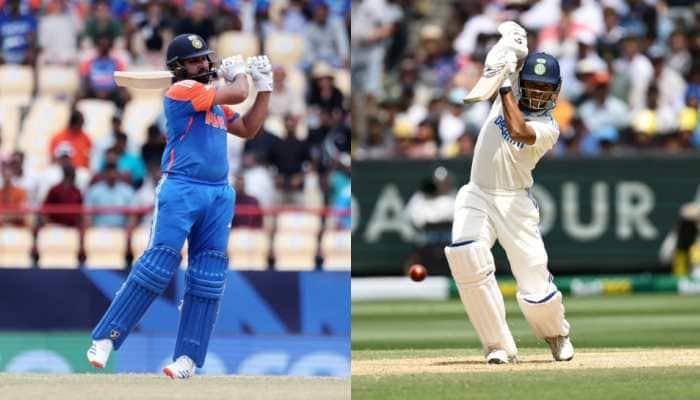Childhood Myopia: Causes, Risks And Long-Term Impact; Check Dos And Don'ts
As dependence on digital devices for education and leisure rises, an expert points out that the issue of nearsightedness is no longer just a medical concern but a looming public health crisis.
- Myopia, or nearsightedness, is primarily caused by a combination of genetic and environmental factors
- Childhood myopia goes beyond the need for spectacles; it has a domino effect on ocular health
- Often, myopia creeps in silently, with subtle symptoms that can easily be overlooked
Trending Photos
)
While genetics play a significant role in children developing myopia or nearsightedness, the problem seems to be on the rise globally. Many experts believe that an increase in indoor activities which include looking at screens to watch television, play video games or use mobile phones can be attributed to the issue. Myopia is not to be dismissed lightly as high myopia is associated with a significantly increased risk for retinal degeneration and detachment, open-angle glaucoma, and cataracts at a young age, among other problems.
Dr Anurag Wahi, Senior Consultant, Sharp Sight Eye Hospitals, says, "In a country where the screen has become a gateway to the world for children, India is witnessing a significant rise in the cases of childhood myopia. With an increasing dependence on digital devices for education and leisure, the issue of nearsightedness is no longer just a medical concern but a looming public health crisis."
What Causes Myopia In Kids?
Myopia, or nearsightedness, is primarily caused by a combination of genetic and environmental factors, says Dr Anurag Wahi. He adds, "Children with myopic parents are at a higher risk, but lifestyle factors such as excessive screen time and insufficient outdoor activities have shown a strong correlation with the rising trend of myopia. The modern lifestyle, characterised by hours spent indoors on screens and a dearth of outdoor activities, is a key culprit. The shift from natural landscapes to digital screens has not just changed lifestyles but has also led to a rise in myopic trends among children."
Early Symptoms Of Myopia
Often, myopia creeps in silently, with subtle symptoms that can easily be overlooked. Dr Wahi says, "Children may squint often, seem overly clumsy, or show an aversion to participating in outdoor activities due to their blurred distant vision. They might also complain of headaches, exhibit excessive eye rubbing, or have difficulty seeing the blackboard at school. Such signs are a clarion call for parents to seek an eye examination for their child."
Risks Of Childhood Myopia
Childhood myopia goes beyond the need for spectacles; it has a domino effect on ocular health. "Higher degrees of myopia significantly elevate the risk of severe eye conditions such as retinal detachment which can culminate in permanent vision loss. The younger the onset of myopia, the greater the likelihood of it progressing to high myopia, which carries a higher risk of these complications," shares Dr Wahi.
Long-term impact
The long-term implications of childhood myopia are daunting. "In India, with its vast population and limited healthcare infrastructure, the consequences of a myopia surge could be profound. An increase in the prevalence of myopia means more resources will be needed for corrective measures and treatments of associated pathologies, potentially putting an additional strain on healthcare systems," warns Dr Wahi.
Myopia: Does Diet Play A Role
The correlation between lifestyle choices and myopia has spurred research into potential preventive measures, says Dr Wahi. The doctor admits that while no direct link has been found between diet and the prevention of myopia, a nutritious diet supports overall eye health. "On the other hand, outdoor physical activity has been shown to have a protective effect against the onset of myopia. Theories suggest that exposure to natural light may play a role in eye development and health," says Dr Wahi.
Also Read: Recreational Activities Are More Than Fun, It's Therapeutic For Elderly - Check Key Benefits
Myopia In Children: Dos And Don'ts
Dr Anurag Wahi shares that as India grapples with the growing concern of childhood myopia, it becomes crucial to adopt a proactive approach. He lists the following dos and don'ts when it comes
Dos:
1. Ensure children partake in regular eye check-ups.
2. Promote a healthy balance between near-vision tasks and outdoor activities.
3. Educate children on maintaining a proper distance from screens.
Don'ts:
1. Ignore any symptoms that could indicate a vision problem.
2. Allow children to spend excessive time on gadgets without breaks.
3. Neglect the use of prescribed eyeglasses or contact lenses.
Tackling Childhood Myopia In India
Dr Wahi says that the field of myopia management is evolving with innovative treatments such as specialised contact lenses designed to reshape the cornea and pharmacological approaches like atropine eye drops, which have been found to slow down the progression of myopia in children. These medical interventions, combined with increased public health awareness about the importance of regular eye exams and protective eyewear, are critical in addressing the myopia epidemic.
With an increasing incidence of childhood myopia in India, a need has arisen to tackle this issue head-on. "That requires a concerted effort that encompasses awareness campaigns, early intervention strategies, and lifestyle modifications conducive to eye health. As the nation confronts this silent epidemic, the collective efforts of healthcare providers, parents, educators, and policymakers must be harmonised to ensure the visual well-being of India's future generations," Dr Wahi signs off.
Stay informed on all the latest news, real-time breaking news updates, and follow all the important headlines in india news and world News on Zee News.
Live Tv







)
)
)
)
)
)
)
)
)
)
